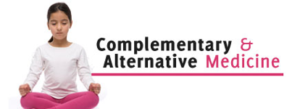 Every parent wants what is best for their child, which often requires finding the best care. One study suggests that 40% of families with autistic children have used complementary and alternative medicine (CAM) to treat autism. CAM refers to treatments used in addition to or in place of conventional medicine. Examples of CAM used to treat autism include yoga and the gluten-free and casein-free diet. These treatments stray from the conventional speech, occupational, and behavioral therapies and drugs used and approved by physicians to treat autism. Because CAM does not receive the same amount of research conventional medicines must receive, it can be potentially dangerous and unsuccessful. When approved treatments for autism exist, why are parents willing to put their child through these potentially unsuccessful and dangerous treatments?
Every parent wants what is best for their child, which often requires finding the best care. One study suggests that 40% of families with autistic children have used complementary and alternative medicine (CAM) to treat autism. CAM refers to treatments used in addition to or in place of conventional medicine. Examples of CAM used to treat autism include yoga and the gluten-free and casein-free diet. These treatments stray from the conventional speech, occupational, and behavioral therapies and drugs used and approved by physicians to treat autism. Because CAM does not receive the same amount of research conventional medicines must receive, it can be potentially dangerous and unsuccessful. When approved treatments for autism exist, why are parents willing to put their child through these potentially unsuccessful and dangerous treatments?

Some families choose CAM, like the GFCF diet, because of ineffective conventional therapies.
Emma Zurcher’s family utilized CAM to treat autism because of the ineffectiveness of conventional treatments. When Emma’s lack of communication did not improve with speech and behavioral therapies, research led the family to try the gluten-free and casein-free (GFCF) diet to aid Emma’s speech, cognition, and digestion. GFCF proponents claim autistic children have an intolerance to gluten (wheat protein) and casein (milk protein) which alters their central nervous system, causing symptoms like difficulty communicating. However, foods containing casein and gluten have important nutrients like calcium, iron, and fiber. Cutting out these nutrients can cause decreased bone health, iron deficiency, and constipation. For Emma, refusing to eat GFCF foods resulted in weight loss.

Avoiding harsh side effects of conventional drugs like risperidone is another reason families choose CAM.
While failed conventional treatments drove the Zurcher family to use an alternative treatment with dangerous effects, some families simply choose CAM because they prefer natural medicines, like dietary supplements and essential oils. Natural medicines avoid the harsh side effects of drugs approved to treat autism. For instance, the drug risperidone treats irritability in autistic children, but it also increases insulin resistance, leading to unhealthy weight gain. Risperidone also increases the hormone prolactin, promoting breast development in males and lactation in females. Instead of facing these side effects, families may use the soothing scents of essential oils vetiver and lavender to calm their irritable child.

Choosing CAM treatments like yoga can enhance conventional therapies for autism.
Families also use CAM to enhance conventional therapies they are currently undergoing. For example, yoga teaches breathing exercises and meditation, allowing children to relax their nervous systems. These calming exercises decrease hyperactivity in autistic children which enhances conventional therapies because the child can remain attentive to the therapist or physician. Yoga also allows children to imitate words of the instructor like “namaste” and “OM.” This vocal imitation leads to an increased ability in pronouncing vowel sounds, which can enhance speech therapy.
Although families of autistic children choose CAM for different reasons, they all want to help their child, and that means potentially facing the dangers and failure of CAM. Whether they choose CAM because of ineffective conventional medicines or because they prefer natural medicine, parents should remember that their child’s autism is not something to be “cured.” Families can treat the symptoms of autism while embracing the unique gifts these autistic individuals offer society.
For Reference:
https://www.ncbi.nlm.nih.gov/pmc/articles/PMC5363441/
Speak Your Mind